We’ve got Great Tips For Starting A Kitchen Garden Every Beginner Should Know! Do you know about all of them?
If you’ve got a kitchen garden, you probably know a few inside tips to get things going. But for those of you who don’t know how to build a kitchen garden or are just starting one, these Great Tips For Starting A Kitchen Garden Every Beginner Should Know will help you get more out of your produce.
Great Tips For Starting A Kitchen Garden Every Beginner Should Know!
1. Pick the Right Place
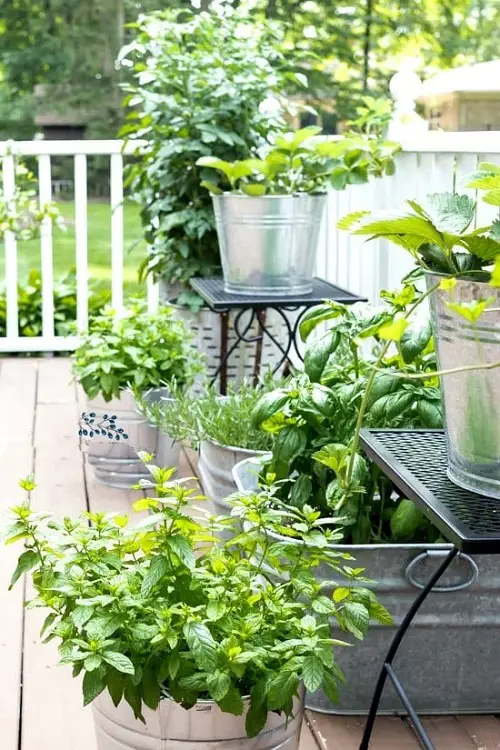
A little bit of planning will go a long way when starting a kitchen garden. Why? Well, if you start one without any thought and there’s no proper sunlight in the spot, your harvest will suffer. Plus, it will take a ton of time to shift it to a new place.
Here’s how to pick the perfect spot for a kitchen garden. Make sure the area has plenty of sunlight with partial shade. If you’re going for a container kitchen garden, this is pretty much it.
But if you’re growing kitchen herbs and veggies in a raised bed or a garden bed, you also need to check the soil quality and pay attention to the area after rainfall. If there are puddles, you need to find another place or add more soil to it.
2. Start with Easy-to-Grow Plants
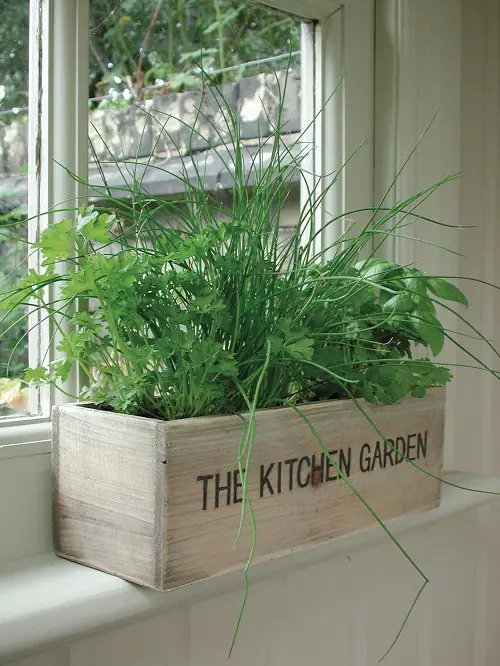
Kitchen gardens aren’t built in a day; trust us–we know. So when you’re starting one and just getting into the mix of things, it’s best to start with easy growers.
Mint is a good option. So are basil, parsley, and beans. You can also go with lettuce, eggplants, cucumbers, and radishes. Microgreens are also great.
Once you feel confident and comfortable with your gardening prowess, you can then start growing more delicate and demanding veggies like cauliflowers, brussels sprouts, onions, cabbage, and artichokes. From there on out, you can go with culinary gardening and plant what you use most in the kitchen.
3. Start Vegetables in Raised Beds
Great herbs come from containers, and tasty vegetables come from raised beds. Remember this as your mantra. Why so? Kitchen garden vegetables need good soil.
You cannot refill all of your garden bed and a container would need to be refilled again and again once as the nutrients get depleted.
That’s why you need raised beds. They’re big, have plenty of space, can be filled with new, good-quality potting soil, and they keep crawling pests and weeds away from the produce. What more could you want? Here’s how to start a raised bed.
4. Lacking Space? Go Vertical

People often think kitchen gardens need a ton of space and don’t start one if there isn’t a lot of ground area. It turns out you don’t need ground area; you need to go vertical.
There are plenty of ways to go vertical. You can go with railing planters, hanging baskets, wall planters, ladders, and much more.
Don’t know what to plant in a kitchen garden like this? Pick vining plants like tomatoes, peas, squashes, and melons–they can be grown vertically.
5. Space Out Well
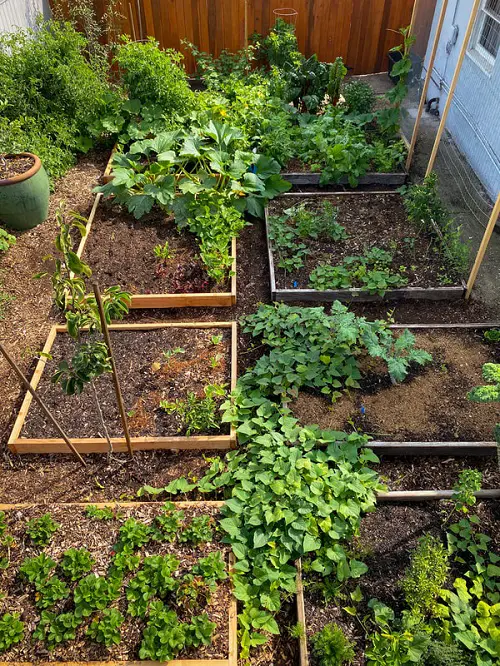
Another great tip for starting a kitchen garden is the spacing. And no, we’re not telling you to get ditch vertical gardens. They’re good. By spacing, we mean the way you arrange the veggies and herbs in containers or beds, so each plant has plenty of space to grow and doesn’t compete with others.
People often grow plants in rows and columns, but here’s the twist: the best pattern for growing veggies is in a triangle. By spacing out your veggies properly, they don’t compete for resources and give you the best produce.
6. Do Succession Planting
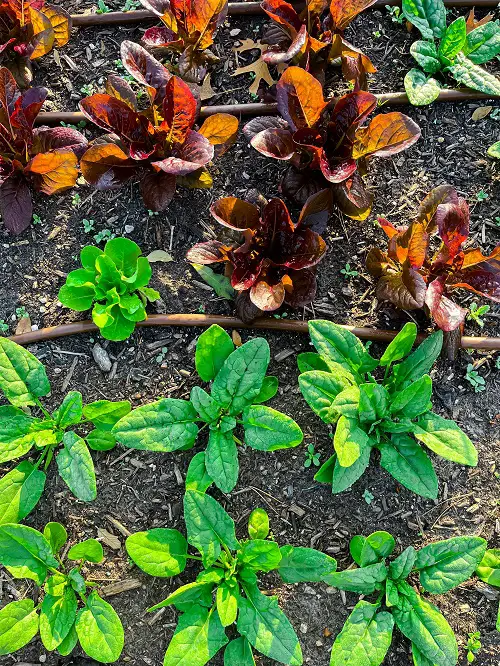
Do you know what succession planting is? Gardeners use it to extend the harvest season and get most of their space. And you can use it as well.
Plant small batches of veggies every few weeks, and you’ll have a steady supply of fresh produce throughout the season.
You can also plant different varieties of the same vegetable with different maturity dates. You could plant a variety of lettuce that matures early, along with a variety that matures later in the season.
7. Use Transplants instead of Sowing Seeds Directly
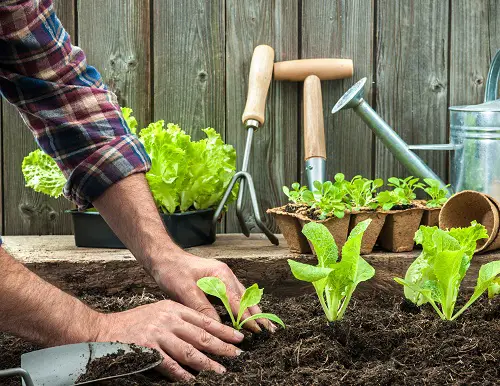
Growing something from a seed takes a lot longer than growing it by cutting or transplanting it. You don’t have to wait for the garden crops to mature before starting the next batch.
You should use the old cuttings and regrow new plants. Also, don’t sow the seeds in the same bed. Get a separate tray and sow the seeds there. Once they grow into a small seedling, transplant them into the kitchen garden.
8. Choose Varieties that Mature Early
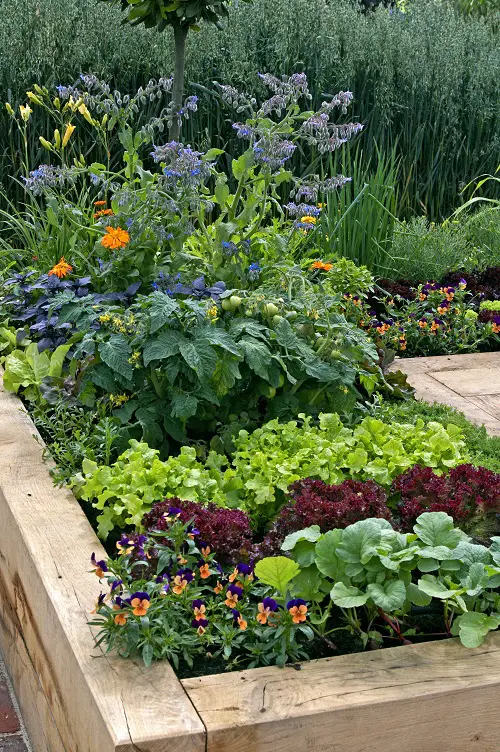
For those of you who live in a colder zone or in a place that has short summers, you should plant varieties that mature quickly.
Early-maturing veggies help you get the most out of your kitchen garden produce before the cold weather sets in. Plus, there’s little risk of frost damage, and you can make the most of the sunlight and warmer temperatures while they last.
9. Sow Compatible Crops Together
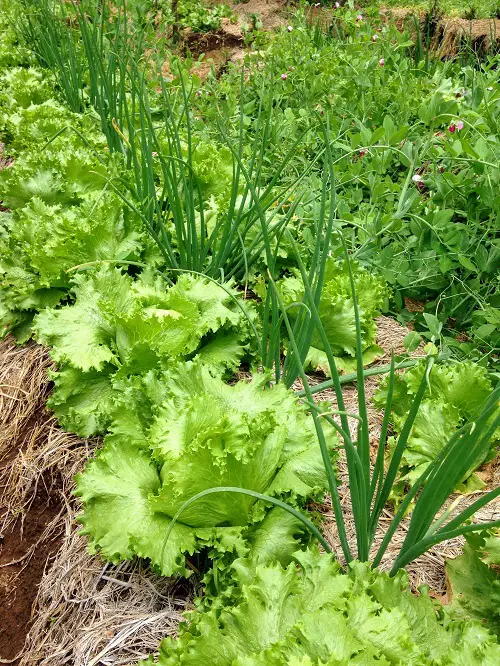
Probably the No 1 tip that we have for beginners starting a kitchen garden is using companion planting to your advantage. The right combination of herbs and veggies is like a match made in heaven.
These pairs benefit from each other and get better nutrients, keep pests at bay, and fix the soil.
You should plant herbs like basil, parsley, and chives near tomatoes and peppers, and they’ll have better flavor. Legumes fix the soil’s nitrogen and should be planted with heavy feeders like corn or cabbage.
10. Try Interplanting

Interplanting means planting your kitchen garden plants or crops close to each other so there’s biodiversity. Such a garden forms a little ecosystem and helps increase the productivity.
It’s basically using all the space you have and not leaving any bare areas in the middle. So, for every gap you see, fill it with a companion plant.
You can plant fast-growing leafy greens like lettuce or spinach between rows of slower-growing vegetables such as tomatoes or peppers.
11. Consider Edge Planting
You can also plant your kitchen garden along the edges to make the most of the growing area and maximize the yield. Edge planting is actually filling up empty edges of garden beds or containers with companion plants.
Trailing or vining plants like strawberries, herbs, or certain types of squash can be planted along the edges. This allows them to cascade over the sides and utilize vertical space efficiently.
Plants like basil, tansy, marigold, wormwood, nettles, lemongrass, and comfrey can also be used for this.
Edge planting also helps define and organize your garden beds, making it easier to tend to your plants.
12. Keep a Garden Journal
You should keep a garden journal. It can help you keep up with planting dates, varieties, weather conditions, and any observations you make. Basically, all the kitchen garden planning.
There are many apps available that can help you with these tasks nowadays as well.
Note down your successes, failures, and lessons learned throughout the gardening season, and the information will help you get better every week at kitchen gardening.


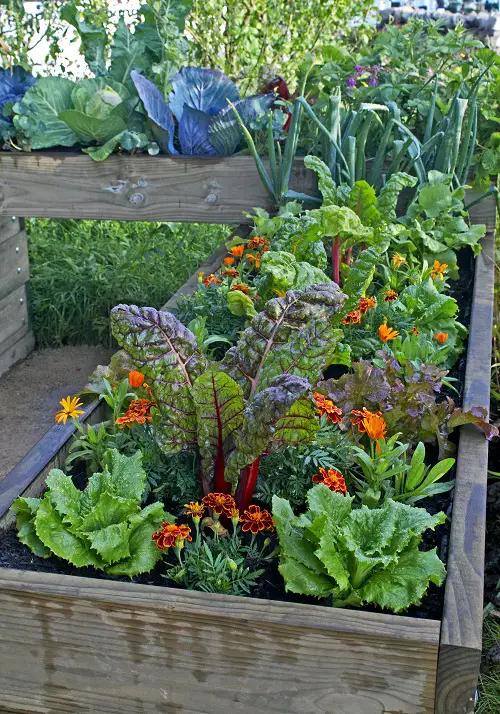
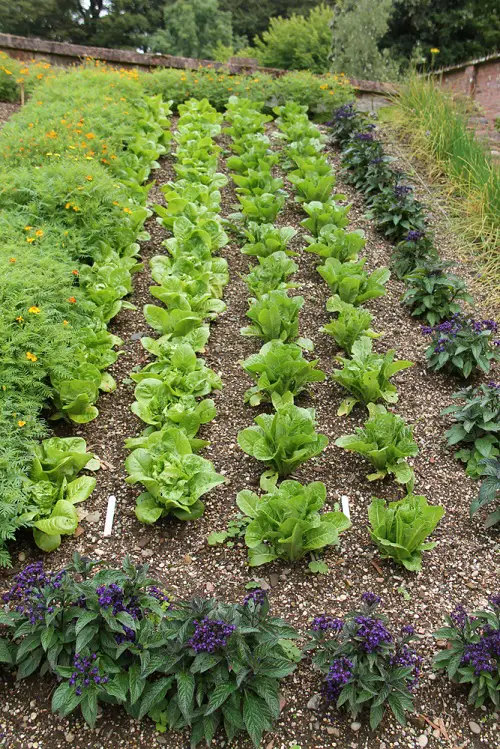


Well, being a beginner in developing trying to cultivate my skills in gardening and having limited garden space I have discovered this to be handy and very helpful to me. It came as my year’ s resolution. Looking forward to come back with positive results. Thank you for the various information I now have.
Very nice garden
I’ve been gone for some time, but now I remember why I used to love this web site. Thank you, I’ll try and check back more frequently. How often do you update your website?
Composting and keeping habitable vehicles nearby will also help you with growing a family of field mice.